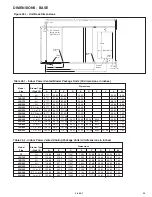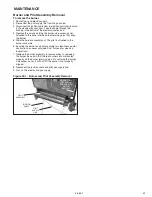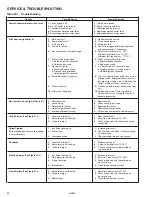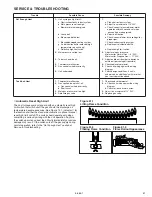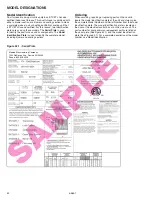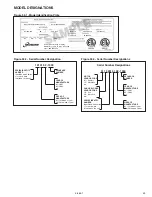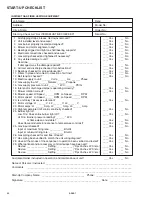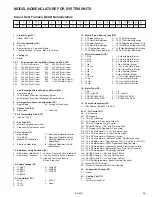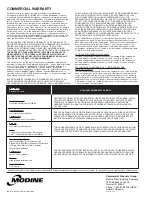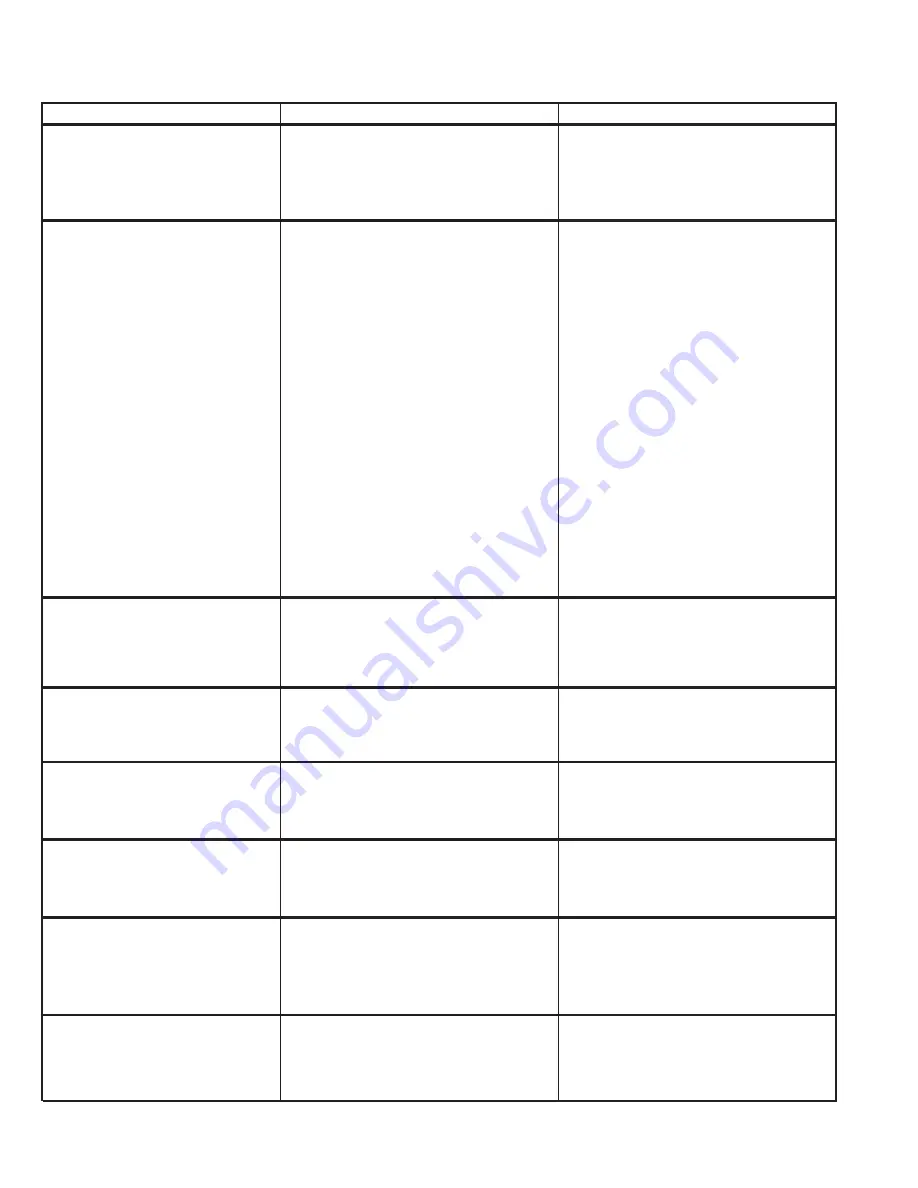
5-565.1
50
service & trouBlesHooting
trouble
Possible cause
Possible remedy
table 50.1 - troubleshooting
Power exhauster motor will not start
1. Power supply is off.
2. No 24V power to thermostat.
3. Thermostat malfunction.
4. Defective power exhauster relay.
5. Defective power exhauster motor.
1. Turn on main power.
2. Check control transformer.
3. Check/replace thermostat.
4. Replace power exhauster relay.
5. Replace power exhauster motor.
Pilot does not light/stay lit
1. Main gas is off.
2. Power supply is off.
3. Air in gas line.
4. Dirt in pilot orifice.
5. Gas pressure out of proper range.
6. Pilot valve does not open.
a. Defective ignition controller.
b. Defective gas valve.
7. No spark at ignitor.
a. Loose wire connections.
b. Pilot sensor is grounded.
c. Defective ignition controller.
8. Safety device has cut power.
9. Excessive drafts.
10. Pilot orifice fitting leak.
1. Open manual gas valve.
2. Turn on main power.
3. Purge gas line.
4. Check for plugged pilot orifice and clean
with compressed air if necessary.
5. Adjust to a maximum of 14" W.C.
Minimum for Natural Gas - 6" W.C.
Minimum for Propane Gas - 11" W.C.
6. Check wiring for 24 volts to valve.
a. Replace ignition controller.
b. Replace gas valve.
7. a. Check all ignition controller wiring.
b. Replace sensor if cracked or worn.
c. Replace ignition controller.
8. Check all safety devices (High limit, air flow
proving switch, differential pressure switch,
gas pressure switches, etc.) Determine and
correct problem. Reset if necessary.
9. Find source and re-direct airflow away from
unit.
10. Tighten pilot orifice. Flame impingment
on pilot sensor may cause pilot sensor to
become inoperative.
main burners do not light (Pilot is lit)
1. Defective valve.
2. Loose wiring.
3. Defective pilot sensor.
4. Defective ignition controller.
5. Improper thermostat wiring.
1. Replace valve.
2. Check wiring to gas valve.
3. Replace pilot sensor.
4. Replace ignition controller.
5. Verify wiring compared to wiring diagram.
lifting flames (see figure 51.1)
1. Too much primary air.
2. Main pressure set too high.
3. Orifice too large.
1. Reduce primary air.
2. Adjust to a maximum of 14" W.C.
3. Check orifice size with those listed on the
serial plate.
yellow tipping
(With propane gas, some yellow tipping
is always present.)
1. Insufficient primary air.
2. Dirty orifice.
3. Misaligned orifice.
1. Increase primary air.
2. Check orifices and clean with compressed
air if necessary.
3. Check manifold, replace if necessary.
flashback
1. Too much primary air.
2. Main pressure set too high.
3. Orifice too large.
1. Reduce primary air.
2. Adjust to a maximim of 14” W.C.
3. Check orifice size with those listed on
the serial plate.
floating flames (see figure 51.2)
1. Insufficient primary air.
2. Main pressure set too high.
3. Orifice too large.
4. Blocked vent.
1. Increase primary air.
2. Adjust to a maximum of 14" W.C.
3. Check orifice size with those listed on
the serial plate.
4. Clean/correct venting system.
flame rollout (see figure 51.3)
1. Main pressure set too high.
2. Orifice too large.
3. Blocked vent.
1. Adjust to a maximum of 14" W.C.
2. Check orifice size with those listed on
the serial plate.
3. Clean/correct venting system.










